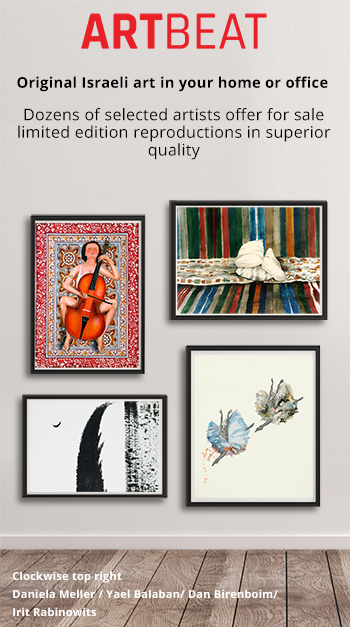Art Shows > The Last Supper in Apollonia
The Last Supper in Apollonia / Eretz Israel Museumטלפון - 03-6415244 18/07/2011 to - 15/11/2011 On April 29th, 1265, after 40 days of a gory siege, the soldiers of Baibars, the Mamluk sultan, broke through the walls of the Crusader fortress in Arsur, known to us today as Apollonia -Arsuf, on the shores of Herzlia. The Knights Hospitaller, who fervently defended the fortress, responded to the call of the sultan who promised them freedom and surrendered to the Moslem armies. However, the Sultan changed his mind and took them as prisoners. During the 40 days of fighting, the Mamluks used the best methods of siege that were known at the time. The Hospitallers on their part used the optimum defensive means known to them, and in some instances were considerably successful. Two thousand five hundred catapults, hundreds of iron arrows and grenades were fired in the battle between the parties. The result was a multifaceted, complex and vicious military battle; ultimately the entire fortress and city walls were razed to the foundation. The deliberate destruction of the Crusader fortress was systematic and extensive to the degree that it no reconstruction was possible. The signs of destruction were obvious throughout the fortress and in the city, and were far more drastic than those found at other sites that underwent similar processes. In anticipation of the forthcoming siege the buildings near the city’s walls were evacuated and filled with earth and stones in order to solidify and reinforce them. The evacuated inhabitants found shelter in the fortress, as did other inhabitants who fled after the city walls were penetrated in the early days of the siege. This large population that resided between the fortress walls mandated reorganization for food preparation and storage. To this end, the existing space in the fortress was reorganized so that it could house tools for grinding, cooking and baking food, and washing dishes. Five stoves for cooking and baking were discovered in the kitchen, as well as sinks for dishwashing. Huge pool, used for drinking water, and installations for grinding wheat were also found. Part of the bathroom was converted into a space for trash; in this space several hundred eating and cooking utensils, storage containers, and lighting equipment belonging to the knights and warriors were found. Beautiful decorated and glazed dishes made in Antiochia, dishes imported from Italy and Asia Minor, and local dishes were found next to fine glassware, including golden dishes. Among the kitchen tools and utensils cooking pots and frying pans of various sizes were found, all of which were glazed and served for cooking, baking and frying. The dishes found in the pit served the knights and warriors for preparing and serving their food. Since part of the bathroom was converted into a trash pit, it is reasonable to assume that the dishes were thrust into the pit by the Crusaders and not by their Mamluk enemies. We may only guess why they threw hundreds of dishes, some of them innocuous, into the pit. Was this a religious act? Or perhaps it served some hygienic purpose and they wanted to save drinking water, which was also used for washing dishes? In the fortress itself no remains of food were found, but the dishes and kitchen utensils, the stoves and tools for the preparation of food attest to the eating habits of the knights of Arsur. The assorted dishes found in the pit are among the most beautiful uncovered in our region, a collection dating from circa 1265. These were most probably used by the knights. The warriors of lesser status used simpler dishes. The meat was roasted in frying pans, and in the saucepans, dishes and stews simmered. Wine was poured from jugs into bottles and from them into drinking bowls. Fruit was served when in season, and the sorbets were sweetened with sugar cane. The exhibit will reconstruct the table of the knights, the defenders of the Crusader’s fortress, at their last supper at Arsur. location - Eretz Israel Museum Time - 18/07/2011 to - 15/11/2011 Exhibition opening - 18/07/2011 |
The content appearing on this page and the details of this exhibition are shown on the behalf of the advertisers and on their responsibility.
All rights reserved to - artbeat.co.il © Israel Art
|1|
